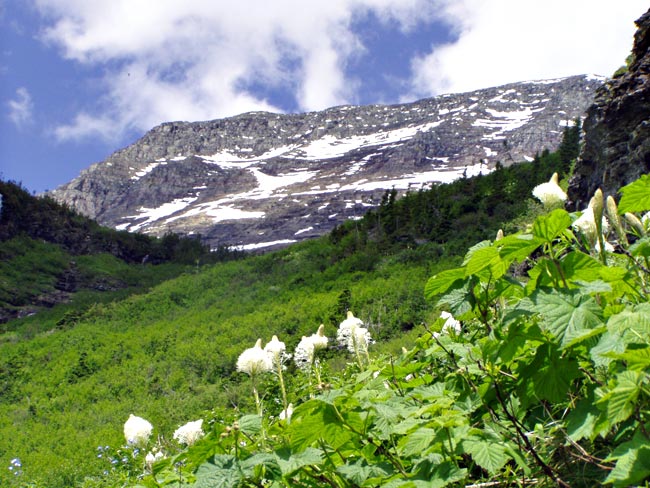Shhh! 10 Ways to Quiet Noisy National Parks

Chirping birds and wind rustling in the trees are among the few sounds that penetrate the peerless silence of national park wilderness. That is, of course, until a 747 jumbo jet roars overhead, a stereo blasts from a nearby car or a snowmobile engine revs in the distance. As the U.S. population grows and more noisy technologies are developed, managing noise pollution becomes an increasing headache for park officials and visitors. But next month, at the Acoustical Society of America’s national meeting in Salt Lake City, researchers will discuss 10 ways to put a lid on the unwanted racket in national parks such as Bryce, Everglades, Grand Canyon, Grand Teton, Yosemite and Yellowstone. Les Blomberg, an acoustician at the Noise Pollution Clearinghouse, told LiveScience that America’s soundscape changed dramatically during the 20th century—and parks still haven’t adjusted. “It’s the noisiest century in the history of the world,” Blomberg said, explaining that the soaring popularity of the car engine isn’t solely to blame. “Air traffic increases every year, and more people are buying jet skis and snow mobiles.” But noise pollution goes beyond annoyance. Unnatural noise, Blomberg explained, can actually disrupt ecosystems and threaten animals' lives. “It interrupts frogs singing in sync,” he said. “When they sing out of sync, they’re pretty much saying ‘eat me, eat me, here I am.’” To help parks manage their soundscapes, Blomberg thinks the following 10 approaches will help:
- Think of noise as audible trash. “We don’t see noise because we’re such a visually-oriented society,” Blomberg said. “Because we try to ignore it, we can’t hear how much trash we’re throwing into the environment.”
- Muffle motorcycles. Motorcycles are supposed to be no louder than 80 decibels—about as loud as a major road from 30 feet away—but owners often swap out for a “manlier” muffler than can be more than twice as loud. “We need to make sure motorcycles rolling into parks meet government standards,” he said. How?
- Train the “noise police.” Karen Trevino, manager of the National Park Service’s Natural Sounds program (which is not connected with Blomberg’s organization), explained that park officials could easily bust noisy violators. “Limiting park access is a heavy decision, but Yellowstone rangers will turn you away if your snowmobile is too loud,” she said. Training all park officials to use noise meters and enforce noise laws could go a long way in quieting parks, she said.
- Quiet campgrounds. “Amtrak has a quiet car, so why don’t we have quiet campsites?” Blomberg said. “I’ll bet people will always pick the quiet campground if they’ve got a choice.” And if everyone wants a quiet campsite, he hopes, parks would be pressured to better manage their soundscapes.
- Limit “thrillcraft.” Blomberg doesn’t propose blocking snowmobiles from parks, but he does think limiting their numbers will go along way in limiting noise. “A snowcoach can carry 12 people,” he explained, “while a regular snowmobile holds only one or two people.”
- Quieter road surfaces. Not all roads are created equal—slick asphalt roads are relatively quiet compared to grooved concrete slabs can sound like a freight train when car tires speed by.
- Hose down watercraft noise. “The noise level we permit on the water is as loud as two semi trucks,” Blomberg said. What’s worse, he explained, is that water is a better reflector of sound, like a sheet of glass. “Our watercraft noise standards currently in place need to be reevaluated.”
- Cut noisy landscaping. “Manufacturers make lawnmowers a fourth as loud as standard models, and they’re not much more expensive,” Blomberg said. By purchasing quieter equipment over the years, parks could cut out a lot of noise, he said.
- Bigger, better buffers. “Parks need to reclaim their airspace,” Blomberg said, “and not just the air overhead—we need buffer space outside of a park to limit noisy aircraft.” But the problem, he explained, is that aircraft noise has been a “hot-button issue” for decades and noise-limiting laws have been slow to move through the courts.
- Clearly audible = clearly prohibited. “In some cities, if a car stereo is ‘clearly audible’ within 50 feet, it’s in violation,” Blomberg said. “If a law like that is good enough for New Jersey, it’s good enough for parks.”
- Quiz: What's Your Environmental Footprint?
- Video: Yellowstone National Park
- Noise Pollution Threatens Birds
Get the world’s most fascinating discoveries delivered straight to your inbox.
 Live Science Plus
Live Science Plus





